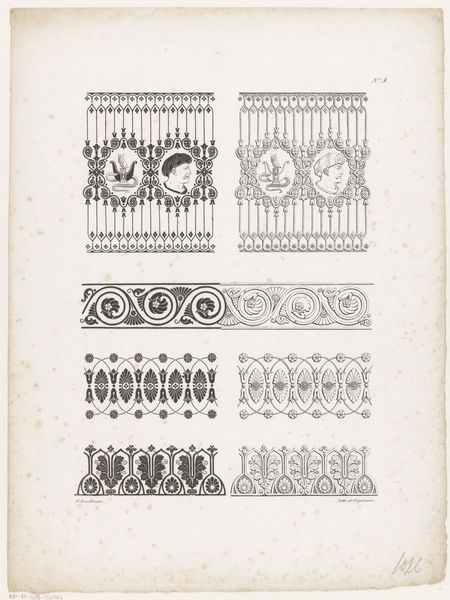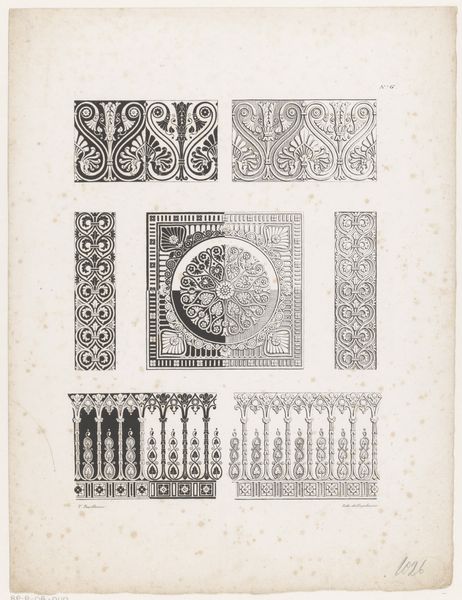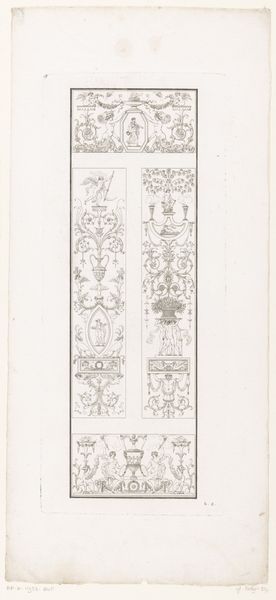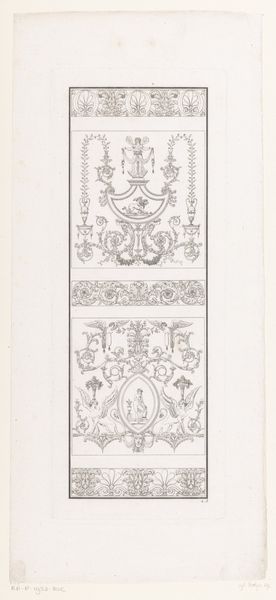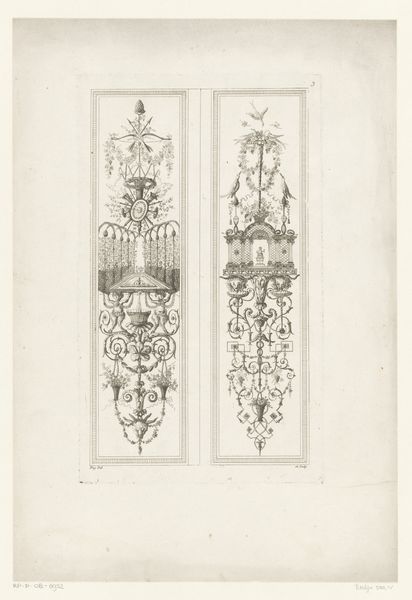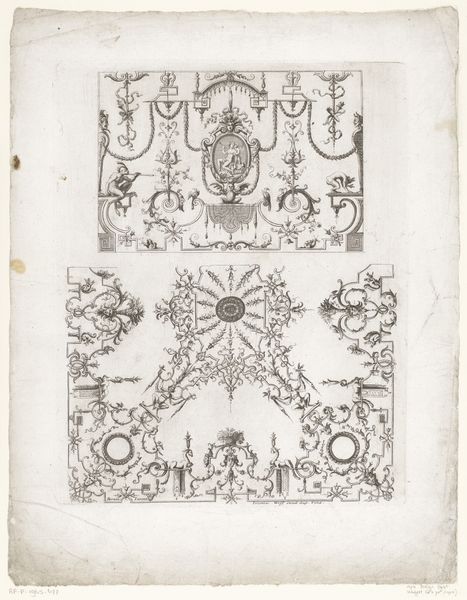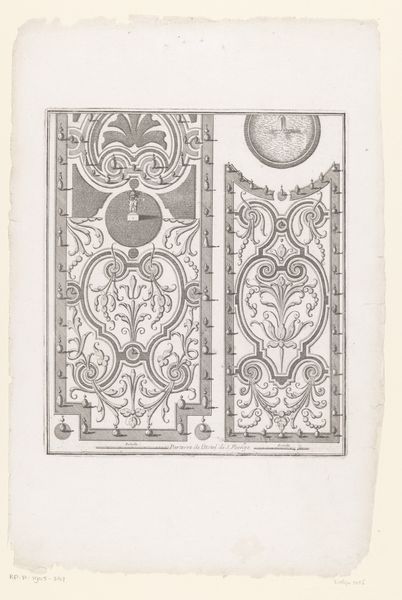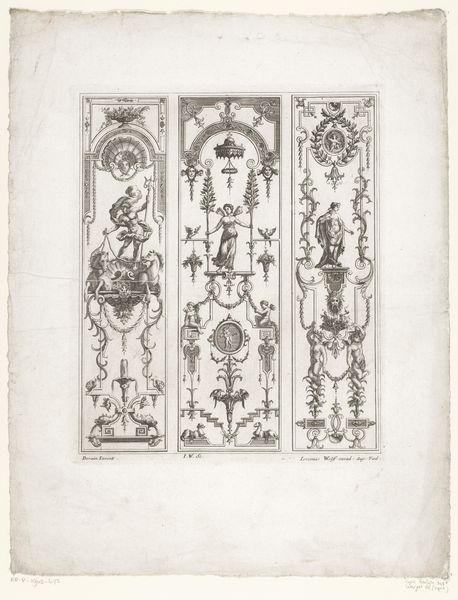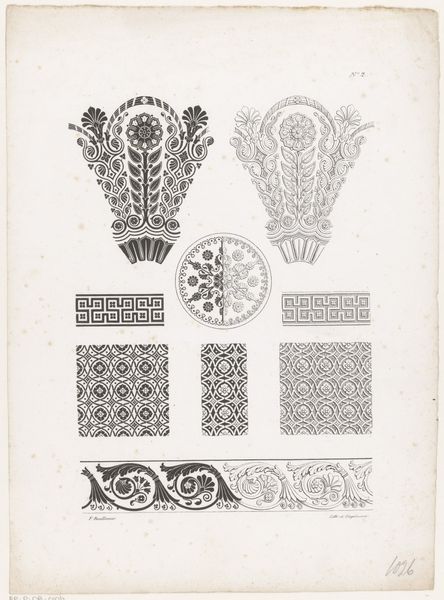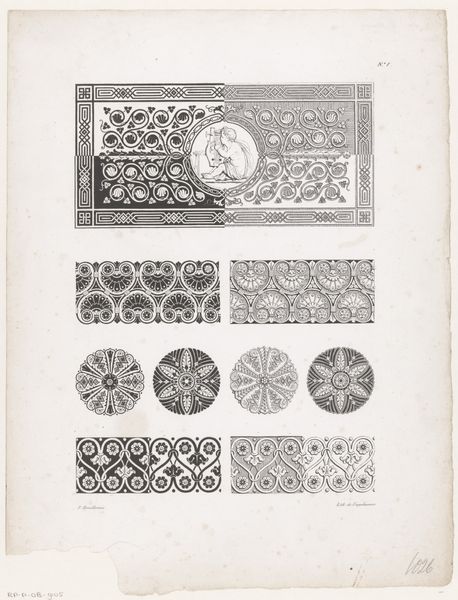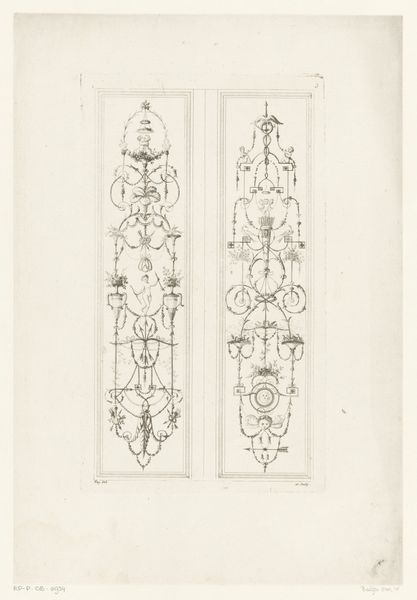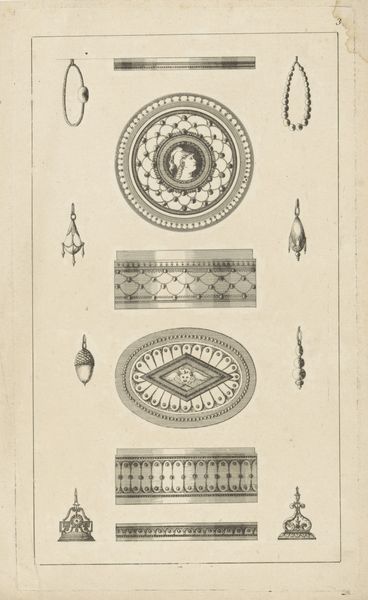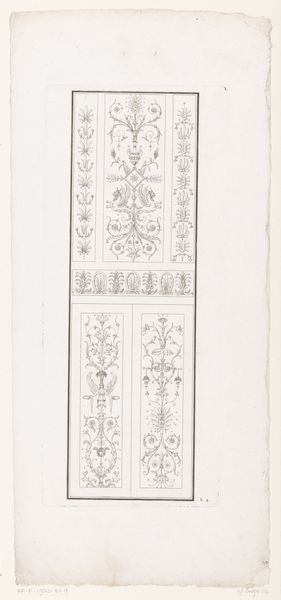
drawing, print, engraving
#
drawing
#
neoclassicism
# print
#
geometric
#
line
#
history-painting
#
engraving
Dimensions: height 356 mm, width 268 mm
Copyright: Rijks Museum: Open Domain
Curator: The neat organization of these patterns really grabs my eye. It is "Lijsten en ornamenten met ridders", or "Frames and ornaments with knights," a print attributed to Gottfried Engelmann, made sometime between 1798 and 1839. Editor: There's something about the stark contrast of the black ink on this creamy paper. It's not just a design, it feels like a recovered fragment from another time, almost archaeological in its presentation of layered ornament. Curator: I find the arrangement fascinating because it echoes the era's interest in organizing and classifying the world around them. The neo-classical style suggests a harking back to an idealised past of Greek and Roman order. The patterns demonstrate how a designer presented historical motifs to be integrated into contemporary arts and architecture. Editor: Indeed. And it's not merely a straightforward copy; the presence of those knights suggests a romantic vision of medieval chivalry that gained currency in the late 18th and early 19th centuries, reflecting anxieties around rapidly modernising Europe. They are signifiers of power and idealized historical memory. Curator: Precisely. Those geometric patterns – the rosettes, the meanders – also reflect symbolic interests that permeate design. This feels to me as much a sample book as a work of art; like an encyclopedia plate intended to classify decorative motifs in an objective way. Editor: I agree, but it goes beyond mere taxonomy. This image carries psychological resonance. The knight symbol, after all, doesn't simply represent a historical figure; it embodies the enduring themes of courage, honor, and duty that can still resonate across time and influence contemporary audiences. The borders can offer comfort and structure to modern creative endeavours, as well as providing historic context. Curator: What do you find most compelling about its public role? It has such an austere character. Editor: Its accessibility as a print means it was more likely used to circulate style ideas broadly and integrate them into popular consciousness, subtly shaping public tastes, even political identities, through everyday designs and applications. Curator: Reflecting on the organization and symmetry and cultural context... this is more than just pleasing design; it's an invitation to engage in dialogue with symbols and history. Editor: Ultimately, it invites viewers to appreciate not only design’s capacity to imitate forms but also to shape how people understand their place within cultural narratives.
Comments
No comments
Be the first to comment and join the conversation on the ultimate creative platform.
